Archive for the ‘Mac and PC’ Category
Description of ‘Mac and PC’ Category:
Friday, December 17th, 2010
 10 Tips to Help Keep Your Data Protected 10 Tips to Help Keep Your Data Protected
Hey everyone I’m Dustin, welcome back to our blog.
Worried about your information going out across the World Wide Web, continue reading to learn how you can get protected against loss of data, data theft, and data corruption.
- Physical Protection: Passwords, firewalls, and virus scanning are great but please don’t forget the basics. Keep your computer physically locked up or only leave it where you know for a fact that it will be safe. Even people you know can access your computer and bring unwanted problems if you give them the chance. Devices like security cables and alarms can be used but are not full proof. Making a note of the computer’s serial number can also be helpful if a theft does occur and needs to be reported. (Computer Protection Devices)
- Don’t be naïve not everyone is nice: Don’t give out your personal information to people you don’t know, it’s not a normal for strangers to ask for your address or birthday when you first meet them. Don’t provide too much information to social networking sites.
- Use Antivirus and Spyware programs: Using good Antivirus software is not enough anymore. New malicious programs are created and discovered every day so it is important that you not only have Antivirus software but that you keep it up to date as well. Antivirus programs scan, track, and remove any problems from your hard drive. Like Antivirus software a spyware program can detect and eliminate any spyware that has made a home on your hard drive. Many Antivirus programs do have anti-Spyware included, if yours does not, you will need to install a separate program for Spyware. Spyware can often track your web usage, violate your privacy, add unwanted features, and take up your computer usage for its own purpose. (Learn More)
- Back up your information: If you don’t already have a back up of your hard drive you should create one. Sooner or later you may encounter a problem that requires a complete hard drive wipe so avoid the hassle of re-building your information and create a backup. There are many programs that will automatically create a back up for you some of them programs include Symantec Backup Exec, Ace Backup, Nero Back it up, Save Me PC, and Evault. Chances are that if you have a security or antivirus program on your computer they will establish a hard drive back up already on a routine basis.
- Activate your Firewall: To make certain that your firewall (in Windows) is active access the control panel, go to network and connections, and select firewall settings. Additional programs like Norton Security Suite and McAfee Security provide additional firewall settings. A firewall acts as a barrier between the internet and your computer protecting it from outside access and intrusive problems. Firewalls are essential to controlling the traffic through the various network ports.
- Learn and Beware: Educate yourself, don’t be fooled, and take a closer look to see what information is accurate and safe. Avoid pop-ups asking you to install software, only install free software that you are sure about and no is safe. Don’t open attachments without scanning first and don’t open links in your emails that you suspect might be bogus.
- Avoid Phishing: Phishing is when emails falsely claim to be an existing organization that you do business with. These emails redirect a user to a website created to look like the legitimate site and then users are asked to update their personal information. Mean while the real company has no need of asking for updated information and you just supplied it all to a criminal. Be cautious of emails expressing urgency and avoid links and submission forms asking for financial information. Sensitive information like this should only be communicated using a secure webpage. (More about protecting yourself against phishing!)
- Make sure pages are secure: Whether it is to purchase items, check bank accounts, or to logon to other sensitive information be certain that site is displaying a security icon on the browser window. In addition to the locked icon, an encrypted web site URL will include https instead of the unencrypted http. Depending on the web browser that you are using the icon will be located in various locations. Take the time to familiarize yourself, knowing where yours is located could prove to be very beneficial. If using Internet Explorer the icon is located next to the search dialogue box at the top right and in Mozilla Firefox it is located in the lower left hand page border. Clicking this icon will launch a separate window detailing the security properties of the webpage. (How to tell if the Page is Secure)
- Create strong passwords: A password should be easy for you to remember and hard for others to figure out. A strong password should be 10 to 14 characters in length. The longer the better but only if you’re able to remember it. Avoid any password based on repetition, dictionary words, letter or number sequences, usernames, relative or pet names, romantic links (current or past), or biographical information (e.g., dates, ID numbers, ancestors names or dates). A password should include numbers, and symbols if allowed by the system. If the system recognizes case, use both capital and lower-case letters. On another note about passwords don’t leave them out where people can see them. A strong password is nothing if you leave a hard copy of it under the keyboard, taped to the desk, or even worst attached to the monitor. Hard copies should be kept in a digital wallet or safe. Also switch it up don’t use the same password for everything. If someone can get into your email that is bad enough you don’t want to give them access to your bank information also. An addition authentication tip is to confirm your user account does not have administrative access on your computer. If for example you are a regular user and despite having anti-Malware software installed, some malicious software gets through, the malware software would only be able to affect your profile and not your computer’s operating system as regular users cannot install most software. (How to Create and Strong Password)
- Wi-Fi Settings: When using public or personal Wi-Fi, be sure to turn off file sharing (Windows) by going to your control panel, selecting network and connection, tab to advanced settings and adjust accordingly. In addition you can activate privacy settings and change the firewall configurations in the same location. Make sure that you have an active firewall and ensure that you turn off the Wi-Fi when no longer using it. It’s also worth mentioning that users should always have their home Wi-Fi connections encrypted so users can’t stand around your house and access it. Also make sure no one is hovering to get your login password.
Hope these tips can help! It is only by taking preventative measures like these that we are able to hopefully stay ahead of cyber crime.
Keep your information Safe and Have a Great Day!
Dustin
ComputerFitness.com
Providing Tech Support to Businesses in Maryland

Tags: Firewall, Information Security, Software, strong password
Posted in Information Security, Mac and PC, PC, PC Maintenance | No Comments »
Thursday, November 4th, 2010

Hey, everyone, Josh from Computer Fitness back with another award-winning article to help you with your computer conundrums.
So you need a new computer? Well, it happens to all of us. Eventually our machines, even though they were once powerhouses, need to be replaced. Now, if you’ve been out of the game for a while, you might not know about everything you need to for today’s applications. Well, here are some things to look for when picking up or building a new computer.
Processor (CPU)
The CPU, or Processor, in a computer is what helps it perform most of its duties. The CPU allows the computer to solve equations, execute tasks, etc. The faster this is, the quicker programs will run. Now, for today’s applications, you want something in the Dual Core line with at least 2.5 GHz for each core. If you really want a screaming fast machine, go with a Quad Core at 3.0 GHz or more. The latter is good for gaming or advanced graphical work, while the former will be good for day to day processing without the need for upgrades in the near future.
Memory (RAM)
While the CPU helps to run programs, the RAM assists. RAM is temporary memory used to store the data needed to run programs. RAM holds the data and the CPU processes it. Now, you want at least 2GB of DRR2 RAM these days, though 4GB of DDR3 RAM would be better. Most operating systems will use up 1GB to start, so you’d already be 50% down with 2GB. Better to go with the 4GB, in my opinion.
Storage Space (Hard Drive)
Think of this like your brain’s long-term memory. You use the Hard Drive (HDD) to store data permanently. This is used to hold your operating system, photos, documents, etc. Bigger is better here, so go with at least 400 GB. Now, if you’ve embraced the digital age and frequently purchase games, movies, and music online, I’d recommend going with 1 TB for your HDD. You’ll avoid needing a backup soon, besides using multiple drives can get complex.
-Josh
Computer Fitness

Tags: HDD, mac, new computer, pc, RAM, Specs
Posted in Hardware Overview, Mac and PC, PC | No Comments »
Friday, October 22nd, 2010
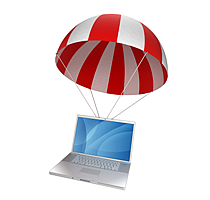 Hey, everyone, Josh from Computer Fitness back with another award-winning article to help you with your computer conundrums. Hey, everyone, Josh from Computer Fitness back with another award-winning article to help you with your computer conundrums.
PC Backups are an important part of computer ownership. Just keeping a copy of your files is a great start. However, there are often programs that get left behind if you only save your media. Software backups vary as to what they offer, but an invaluable tool is PC Imaging software.
Think of this like a camera. The software will take a “picture” or image, on your machine, which you can use later. The image, in this case, contains everything on your computer at that point. Later, if you need to restore your PC’s files to another machine, you can practically pick up from where you left off.
Another valuable use of this technology is to create a template for new machines. If you run a small to medium sized business, odds are that you use similar or identical PCs in your office. In this case, your IT folks can configure the machines are necessary using a singular image file. This makes turn around much faster on broken machines.
Some software solutions to help you out with this are Norton Ghost for PCs and Time Machine for Mac OS X. Time Machine is included with all Macs made since 2008.
-Josh
Computer Fitness

Tags: backups, Information Security, Software, Tips, tools
Posted in Mac and PC | No Comments »
Wednesday, August 18th, 2010
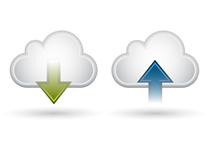 Hey, everyone, Josh from Computer Fitness yet again. Hey, everyone, Josh from Computer Fitness yet again.
This week we’re going to take a break from the more serious stuff and show you a neat little feature in a program called Steam. Now, we’ve mentioned Steam before in some of our other articles, but for those of you new to this, Steam is a program that offers both organization of your current PC/Mac games as well as a storefront to buy new ones. It also provides a Community feature and a “Friends” list. Well, in the past month, they’ve instituted a cool new feature that you might enjoy. It’s called syncing, and it saves your game files online.
By using a cloud sync for your data, Steam is allowing for progress in any of their games, as well as some made by other publishers, to be stored online. Since many of the games are now PC/MAC compatible, this means that you can play Half-Life 2 on your Mac at work, and then pick up where you left off on your home PC. The best part? It’s free.
This service is included freely just for playing these games. A Steam Account is free, and the games are almost always on sale. On top of this, you never have to buy CDs again. The games themselves are managed by Steam, so if your computer dies, you buy a new one, download Steam, log in, and re-download all your purchases. No hidden fees. I’m sort of Steam fanboy, so don’t take my word alone. Go check it out!
-Josh
Computer Fitness
We are a Tech Support Company for Small and Medium businesses in and around Baltimore, Maryland and we are located in Reisterstown, MD.

Tags: fun, games, mac, pc, Software, Steam
Posted in Mac and PC | No Comments »
Thursday, August 5th, 2010
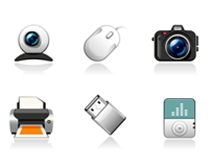 Hey, everyone, Josh from Computer Fitness yet again. We are a Tech Support Company for Small and Medium businesses located in Reisterstown, MD. Hey, everyone, Josh from Computer Fitness yet again. We are a Tech Support Company for Small and Medium businesses located in Reisterstown, MD.
Everyone knows that companies put out updates for their software. These often correct problems and occasionally add new features. This type of continuing support is often the hallmark of a good company. Well, did you know your hardware has similar updates? It does!
The software that tells your hardware how to interact with your operating system (Windows/Mac OS X) is called a driver. These get updates can often help your hardware perform better and may even stave off costly repairs.
Windows
Microsoft introduced Microsoft Update in recent versions of Windows. Most people are familiar with Windows Update, which handles all necessary updates to the OS (operating system). What Microsoft Update does is collect information about the devices you have installed on your machine and search for drive updates, as well as Windows updates. Microsoft Update will prompt you to enable it the first time you get your Windows Updates. Simply accept and it will walk you through updating it. This all-in-one center for keeping your system up to date and healthy is similar to the Apple solution, which we will go into next.
Mac OS X
One of the key benefits of owning an Apple computer is that they build all of their computers in house, which means they know everything that went into the machines. This means that a complete update solution was built into the system since it was assembled. Microsoft doesn’t make computers, so Microsoft Update is the closest they can get; which is not bad at all for a software company.
Anyway, Mac OS X uses a program called “Software Update” to keep your Mac up to date on all the latest driver and software updates. It will check periodically on its own, just like Microsoft Update, but you can also pull it up at will. Simply click the Apple logo in the top left of your menu bar. Then click “Software Update”. The program will scan for updates, list them for your approval, and then proceed to handle everything for you.
-Josh
Computer Fitness

Tags: Apple, Drivers, mac, microsoft, pc, Software, Update
Posted in Desktop - Workstation, Mac and PC | No Comments »
Friday, July 30th, 2010
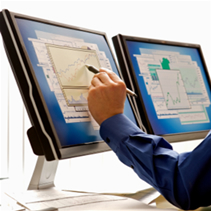 Hey, everyone. It’s Josh from Computer Fitness yet again. We are a Tech Support Company for Small and Medium businesses located in Reisterstown, MD. Hey, everyone. It’s Josh from Computer Fitness yet again. We are a Tech Support Company for Small and Medium businesses located in Reisterstown, MD.
It’s 2010 and one monitor just won’t cut it anymore. That’s the reality for a lot of computer users these days. Graphic designers and a plethora of other people need more than just one monitor to prevent data overload and clutter. It’s the same thing as having too many files on your desk. You buy a return with some drawers to the side to add a little space and keep things more organized. Others use a second monitor for entertainment, such as hooking up your laptop to a TV. This is useful when streaming TV shows from, let’s say, Hulu. Configuring your system to work with this is pretty simple, and the rewards can be pretty cool. Here’s a walkthrough for getting a secondary display attached to your PC or Mac.
PC
- Check to make sure your graphics card has two outputs
- Laptops just use the VGA out port
- Desktops will require a special card if no second output is present
- Power down
- Connect second monitor
- Power on the machine
- If it doesn’t auto detect, right click on desktop
- Select Properties
- Go to change your resolution
- You should see a second monitor in a little window there, and it may be grayed out
- Click on it
- Then check the “Extend My Windows Desktop onto this Display” box directly beneath the monitor diagram
- Click OK
Mac OS
- Plug in the secondary monitor
- Should auto-detect
- Click “System Preferences”
- Open “Displays”
- It will display this window on both monitors
- Will either automatically mirror your existing desktop or extend it
- In this setting panel, choose how you want it to look
- Optional: Enable “Show Displays in Menu Bar”
- Great option if you are frequently hooking up your computer to a TV or any other external display
-Josh
Computer Fitness

Tags: desktop, display, functionality, Laptop, monitor, pc, second monitor
Posted in Desktop - Workstation, Mac and PC, Monitor / Display | No Comments »
Friday, July 9th, 2010
 Hey, everyone. It’s Josh from Computer Fitness again. We are a Tech Support Company for Small and Medium businesses located in Reisterstown, MD. Hey, everyone. It’s Josh from Computer Fitness again. We are a Tech Support Company for Small and Medium businesses located in Reisterstown, MD.
Handbrake
Handbrake is a great program for backing up DVDs. Bear in mind, these are DVDs you are allowed to backup legally. The best use I can recommend is family movies and the like that you are converting to a digital format. We made the transition from tape to DVD a while back, but now digital is the way to go. You can edit them, add effects, and do a lot of cool stuff. Handbrake is free and available here.
SMC Fan Control
SMC Fan Control is a great tool for controlling the fans on your Apple laptop. Exercise caution here, however, as you are meddling with forces that control how your laptop is cooled. You might be tempted to crank the fans up to keep your system cool. However, if you keep them at full blast all the time, you risk wearing them out. Conversely, if you keep them low all the time to avoid noise, you risk overheating. Be careful with this tool and, as with all software recommendations, we at Computer Fitness make no guarantees about third party software.
Steam – Great for gamers looking to use their Mac for Entertainment
Steam, available at www.steampowered.com, is a gaming platform for your Mac and PC. Recently having made the Mac part of their wheelhouse, Steam offers a variety of games from First Person Shooters like Half-Life to standard puzzle games like Bookworm. Acting as both a storefront and a program manager, Steam allows for seamless integration of its online components (features like Friends/Messaging) with standard games. Best of all is the ability to download your games onto whatever system you like. This makes backing up data worry-free, provided you have a fast Internet connection.
-Josh
Computer Fitness
Onsite and Remote Tech Support

Tags: Apple, mac, OS X, Software
Posted in Mac and PC | No Comments »
Wednesday, June 23rd, 2010
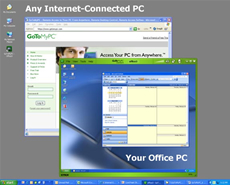 As seen at https://www.gotomypc.com/corp/technology.tmpl June 2010 Hey, everyone. It’s Josh from Computer Fitness again. We are a Tech Support Company for Small and Medium businesses located in Reisterstown, MD.
As we’ve talked about on one of our other blogs, remote use of a computer is a growing trend in today’s IT world. The article, located here, talks about some of the reasons why using RDC is a great idea. Here at Computer Fitness, we’re going to take a look at how to get this up and running on your home machine.
I’m going to assume that you’re using Windows for this part. Mac OS comes next. First, open up your Start menu. Next, you want to right click on My Computer. Next, click Manage. This will bring up a new screen with a lot of details about your computer. If you are using Windows XP, which a lot you probably are, you’ll see a tab labeled Remote.
On the Remote tab, there are two check boxes. The one you want to check here is under Remote Desktop and labeled “Allow Users to Connect Remotely to this Computer”. This computer can now be accessed remotely. If you want to add users that are allowed to use this privilege, which I recommend, just click the box labeled Select Remote Users. That will keep a tight control on the people using it.
Now, for Mac Users. This is pretty easy. Open up your System Preferences. Now, click on Sharing. Once that loads, you will see a number of options for sharing. Things like File Sharing will likely already enabled. You want to check the box labeled “Remote Management”. Once you do, you will be presented with a list of options for users taking control of the system. This provides granular control over users. This way, even if someone gets into your system, you still have some control if you aren’t there. Check the appropriate boxes and hit okay. As with Windows, you can select certain users to give access.
-Josh
Computer Fitness
Onsite and Remote Tech Support

Tags: computer, control, mac, pc, remote, sharing, tech support, users
Posted in Desktop - Workstation, Mac and PC | No Comments »
Thursday, June 17th, 2010
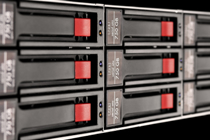 Hello and welcome to Computer Fitness’ Blog! My name is Josh. Computer Fitness is a tech support firm for small and medium businesses in Reisterstown, MD. Our areas of expertise run the gamut from workstation repair to server maintenance. Hello and welcome to Computer Fitness’ Blog! My name is Josh. Computer Fitness is a tech support firm for small and medium businesses in Reisterstown, MD. Our areas of expertise run the gamut from workstation repair to server maintenance.
So you’ve got a Mac and that’s awesome. You like the OS, the feel, whatever. However, you still need to run some Windows apps so you figure you’ll do that natively. It makes sense. So you get your copy of Windows and your Mac OS X disc and begin the process.
Now that you’ve gotten Windows installed, you’ll need to access your Mac side unless you want to waste precious disk space. The best part is, you can do this. First, make sure you have the latest version of Boot Camp for Windows. It comes from the OS X disc and is also available online from Apple. Once you install it, you can get read-only access to your OS X side! However, let’s say you have an external drive.
If you have an external drive, you will likely want to share files. To do this, you will need to format the drive. In Windows, view the drive in My Computer and right click on it. Now, format it in FAT format. This stands for File Allocation Table format. This is the only format that both Windows and MAC can read/write to.
Lastly, if you want to use part of your external as a Time Machine drive and the other half for Windows, you can do that, too. Open up Disk Utility in Mac OS X and select the drive you want to partition. Then, drag the slider on the left to indicate how you want it split. Now, you can partition the drive. Next, format one part as Mac OS X Journaled and the other as FAT. You can now use an external drive as two different drives!
-Josh
Computer Fitness
Onsite and Remote Tech Support

Tags: Apple, Formatting, HDD, Windows
Posted in Mac and PC | No Comments »
|
 10 Tips to Help Keep Your Data Protected
10 Tips to Help Keep Your Data Protected





 Hey, everyone, Josh from
Hey, everyone, Josh from 







